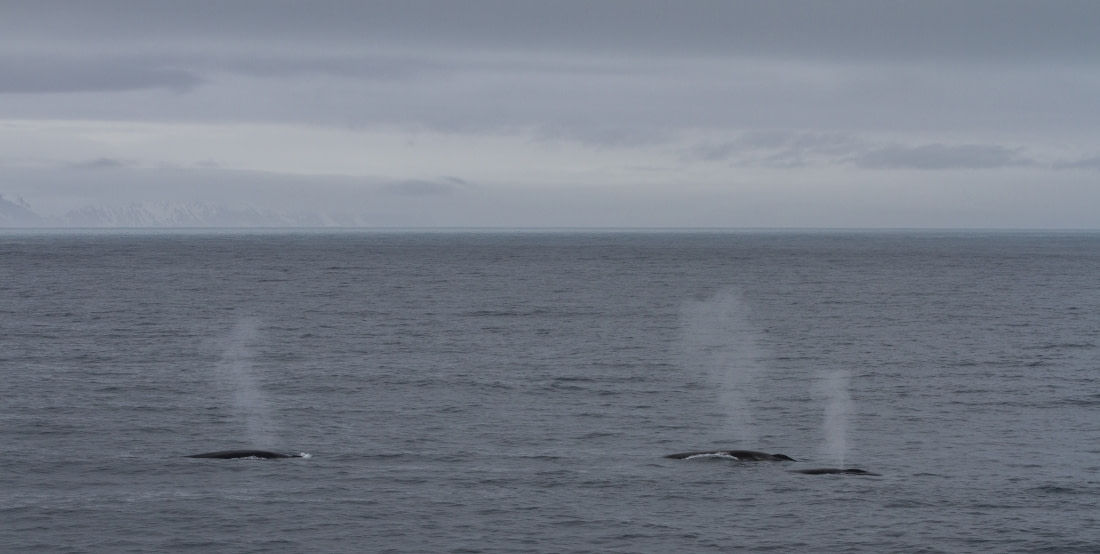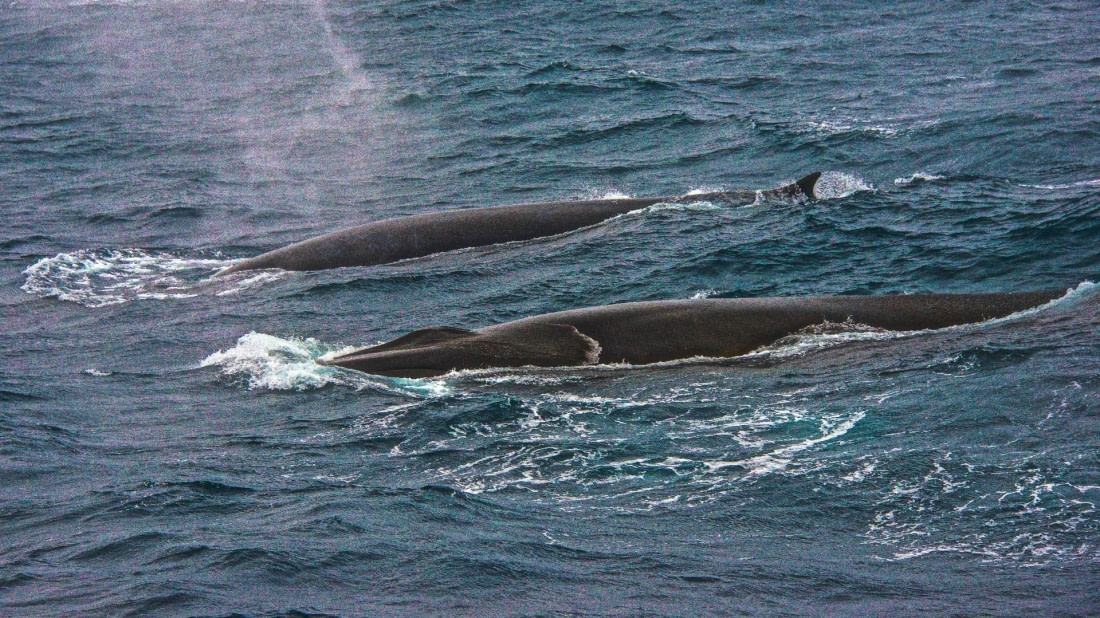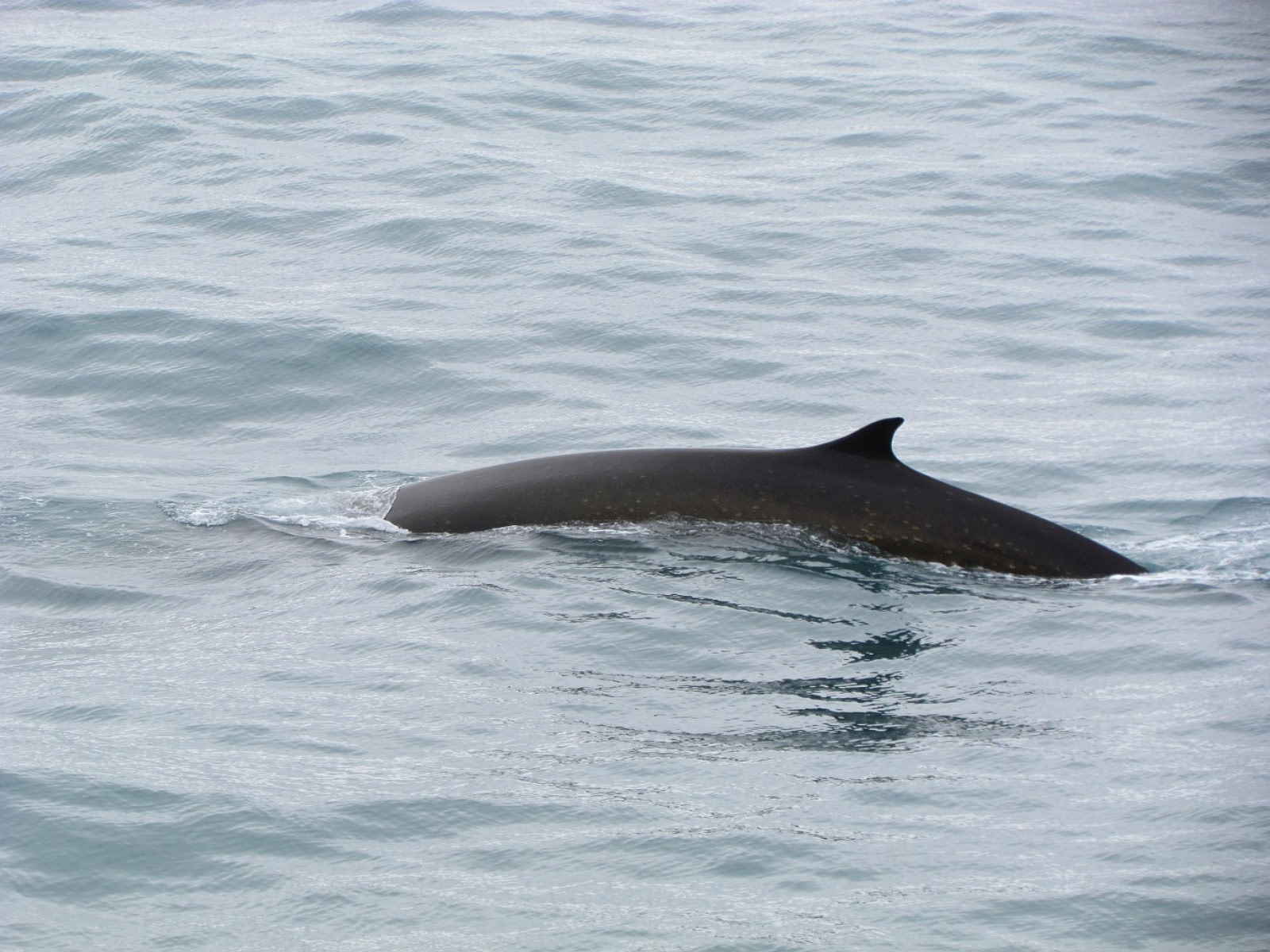Name: Fin Whale (Balaenoptera physalus), also known as Finback Whale, Razorback Whale, Common Rorqual
Length: 27 metres
Weight: 74 tonnes
Location: Worldwide, except under polar ice caps
Conservation status: Endangered
Diet: Small fish, squid, crustaceans (copepods, krill)
Appearance: Grey with a lighter underside

What do Fin Whales eat?
Fin Whales feed by gulping large volumes of water, up to 70 cubic metres, and then filtering it out through their baleen plates, trapping small fish and plankton. They can dive up to 200 metres and consume as much as 1,800 kg of food daily. They may herd schooling fish into tight balls for easier feeding.
Are Fin Whales social?
Fin Whales' social structures vary by location. They can be seen alone, in pairs, or in small pods of up to 6. During migration, they may form larger groups of up to 300 individuals.
How fast can Fin Whales swim?
Fin Whales typically swim at 35 km per hour, slowing to 10 km per hour while feeding. They can reach speeds of 45 km per hour in short bursts.
What are Fin Whale mating rituals like?
Females reach sexual maturity at around 6 years and give birth every 3 to 4 years. Mating rituals have not been observed, but pregnancies last about a year. Calves are about 6 metres long and weigh 2 to 3 tonnes at birth, nursing for 6 months and doubling in length during this time.
How long do Fin Whales live?
Fin Whales can live up to 90 years in the wild.
How many Fin Whales are there today?
The global population of Fin Whales is estimated to be around 100,000.

Do Fin Whales have any natural predators?
Killer Whales sometimes prey on young or old Fin Whales, but healthy adults are fast swimmers and difficult to catch.
7 Fabulous Fin Whale Facts
- Fin Whales have asymmetrical coloration: the right side of their jaw, lip, and baleen is yellowish-white, while the left side is grey. This may help them hunt by presenting a more threatening aspect to prey.
- "Balaenoptera" means "winged whale," and "Physalus" means "bellows."
- Fin Whales are mostly pelagic, spending most of their time in deep seas, making them difficult to study.
- They are the second largest mammals, after Blue Whales.
- Fin Whales are nicknamed "Razorback" due to the pronounced ridge behind their dorsal fin.
- They tie with Blue Whales for producing the lowest-frequency sounds of any animals.
- Their sounds were initially mistaken for geological events, submarine signals, or equipment malfunctions.

The Classic Polar Cruise: Antarctic Peninsula Facts, Pics, and More

Bouvet Island: The Most Remote Island in the World






